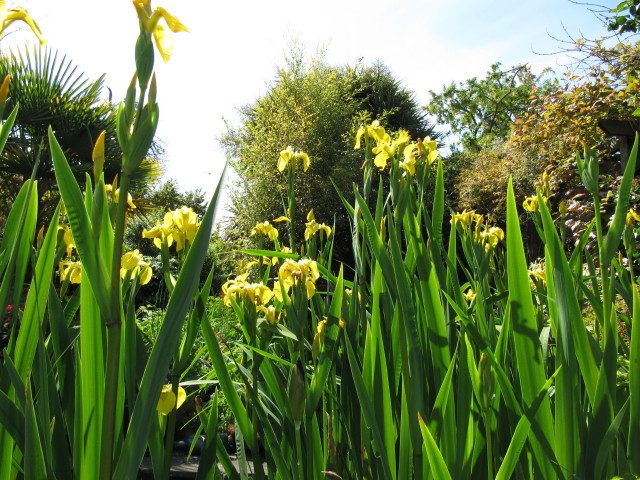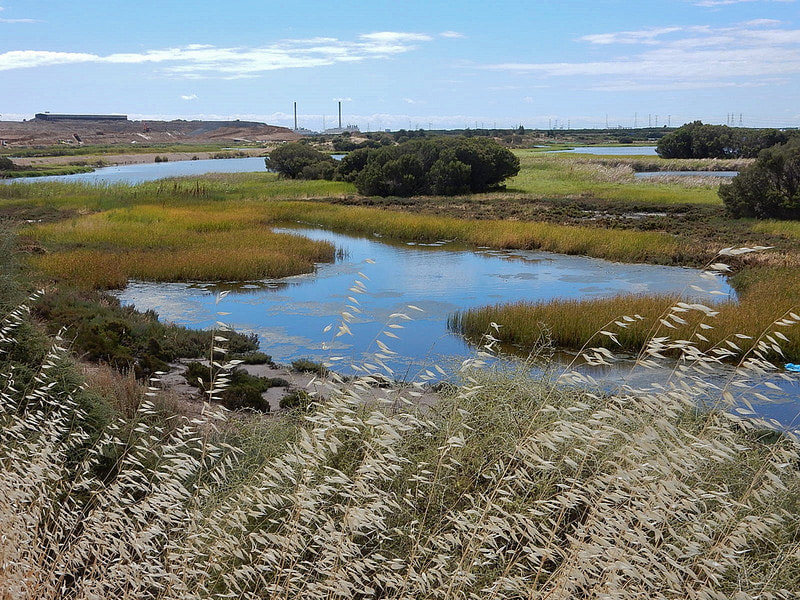|
Water discharge from human habitation takes many forms. Sewage, storm water and grey water all have the potential to cause many problems to the environment around our towns and cities. The high nitrogen composition of sewage means it has the potential to cause eutrophication to in rivers and natural watercourses destroying aquatic organisms. Grey water containing detergents and food particles also cause problems if allowed to flow freely into the ecosystem many studies have been done on the potential harm of chemical residues within grey water release into watercourses. Excess urban storm water runoff is an added catalyst to pollutants from our roads and urban environments. Dog faeces, chemical spills, paint and herbicides are all but a few of toxins that enter the hydraulic system after rainfall.
An amazing upside to this problem is that natural wetland plants have the ability to clean all waste water through natural biological processes. With a combination of sustainable landscaping installations such as bio swales, retention basins, wildlife ponds and reed bed filtration catchments. These sustainable urban drainage solutions represent and ecological way to deal with waste water from our homes and can be implemented on both a regional and domestic level. The general conceptual layout of biological water treatment with ecological landscaping is capturing water discharge in manmade wetland zones to be cleaned before returning to the local water system. There are multiple ways this can be achieved with swales leading to marsh areas and shallow gravel beds and a series of connected retention ponds capturing and cleaning particles on their journey through the system. These systems require no maintenance no electricity and cost on average one third of what more traditional waste management systems cost. A typical reed bed filtration system can filter both grey water and sewage from nearby homes. In the case of sewage ecological landscape design should be implemented to reduce odours via prevailing wind and installing a more submerged filtration bed. The main component structure of the reed bed is an excavated cell or basin of gravels with a gravitational route through dense wetland plants and reeds. The gravels and sands allow particles within the water move freely through the roots and shallow courses of the wetland. The roots of the reeds oxygenate the water and take up extra nutrients and nitrates as they flow through the beds. The reeds sequester nutrients from the waste water as they grow in their fibres and leaves. Small aquatic organisms and bacteria further break down and filter out pollutants and heavy metals in biological processes. Reed beds are a typical example of how wetland plants are used to clean waste water but there are many other wetland planting types for water cleansing and filtration. The three main wetland planting types are: Submerged plants which provide oxygen to the water, Marginal’s which allow water to pass through their roots and shoots. Floating plants such as Duck weed. All of these have their place in the cleaning of waste water from urban environments. In most cases a combination of swales directing flows through reed bed systems to a series of retention wildlife ponds is the most effective interconnected system to direct waste water ecologically back into the environment. The three main wetland plant types can be implemented into a wildlife pond for maximum effect. These wetland areas can be designed into landscaping implementing sustainable landscaping projects. These wetland parks and gardens can be enjoyed by people for recreation as well as wildlife species. Further Reading
0 Comments
Leave a Reply. |
AuthorPaul Nicolaides is a landscape Architect from North London and Director of Ecospaces Limited ecological Landscape design & build contractors. His ambition is to help accelerate change to a more sustainable ecological society. A society that plans its urban environments integrating agriculture, wildlife habitat, natural processes, recycling, industry, and sustainable urban drainage. Above all Paul aims to integrate these disciplines and realise there compatibility both on a local and landscape level. Archives
July 2018
Categories |
Photos from Tauralbus, Kurayba, ChodHound, tristanloper, scott1346, Sustainable sanitation, RobBixbyPhotography, The hills are alive*, Bobby McKay., ell brown, ncwetlands.org, Drantcom, alh1, Verokark, U.S. Embassy New Delhi, John Brighenti, umseas, wuestenigel, nestor galina, Sander van Dijk, mikecogh, oatsy40, foundin_a_attic, ndrwfgg, The Garden Smallholder, Aaron Volkening, wallygrom, Sander van Dijk, Base Camp Baker, Local Food Initiative, Kansas Poetry (Patrick), blachswan, infomatique, Phil Roeder, aschutz57







 RSS Feed
RSS Feed
